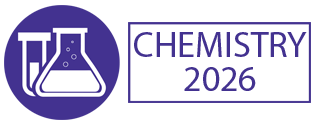Immunoassay
Immunoassay is a sensitive analytical technique used to detect and quantify specific molecules in a sample by utilizing the highly selective binding between an antigen and an antibody. This technique is widely employed in medical diagnostics, pharmaceuticals, environmental monitoring, and food safety. Immunoassays can detect various analytes, including proteins, hormones, drugs, and pathogens, with high specificity and sensitivity. Different immunoassay formats exist, such as enzyme-linked immunosorbent assays (ELISA), radioimmunoassays (RIA), and lateral flow assays (LFAs), each offering unique advantages in terms of sensitivity, speed, and simplicity. ELISA, for example, utilizes enzyme-labeled antibodies to generate a detectable signal, while LFAs provide rapid, qualitative results suitable for point-of-care testing. Immunoassays play a crucial role in disease diagnosis, monitoring treatment efficacy, and screening for infectious agents. Continuous advancements in immunoassay technology, including multiplexing and miniaturization, enable high-throughput analysis and the detection of multiple analytes simultaneously. Collaboration between researchers, clinicians, and industry professionals drives innovation in immunoassay development, expanding its applications and improving its performance for various analytical needs.

Hossam A Gabbar
Ontario Tech University, Canada
Victor John Law
University College Dublin, Ireland
Alexander Bagaturyants
National Research Nuclear University MEPhI, Russian Federation
Sergey Suchkov
N.D. Zelinskii Institute for Organic Chemistry of the Russian Academy of Sciences, Russian Federation
Shree Niwas Chaturvedi
Centre for Aptitude Analysis and Talent Search, India
Pieter Samyn
SIRRIS, Belgium




Title : Advances in plasma-based radioactive waste treatment
Hossam A Gabbar, Ontario Tech University, Canada
Title : Unraveling the ultrastructure and functions of the neuronal membrane skeleton using super-resolution fluorescence microscopy
Zhou Ruobo, Djillali Liabes University of Sidi Bel Abbes, Algeria
Title : Solar box cooker dehydration, and relative humidity endpoint detection, of lamiaceae culinary leaves on the island of Crete
Victor John Law, University College Dublin, Ireland
Title : Nutrient and heavy metal loads from the Ribeiras to Coastal zones: A land-ocean continuum perspective in Madeira Island
Aracelis Del Carmen Narayan Rajnauth, University of Porto, Portugal
Title : Prospective polyoxometalate-based covalent organic framework heterogeneous catalysts
Arash Ebrahimi, Comenius University Bratislava, Slovenia
Title : Eliminating implant failure in humans with nano chemistry: 30,000 cases and counting
Thomas J Webster, Brown University, United States